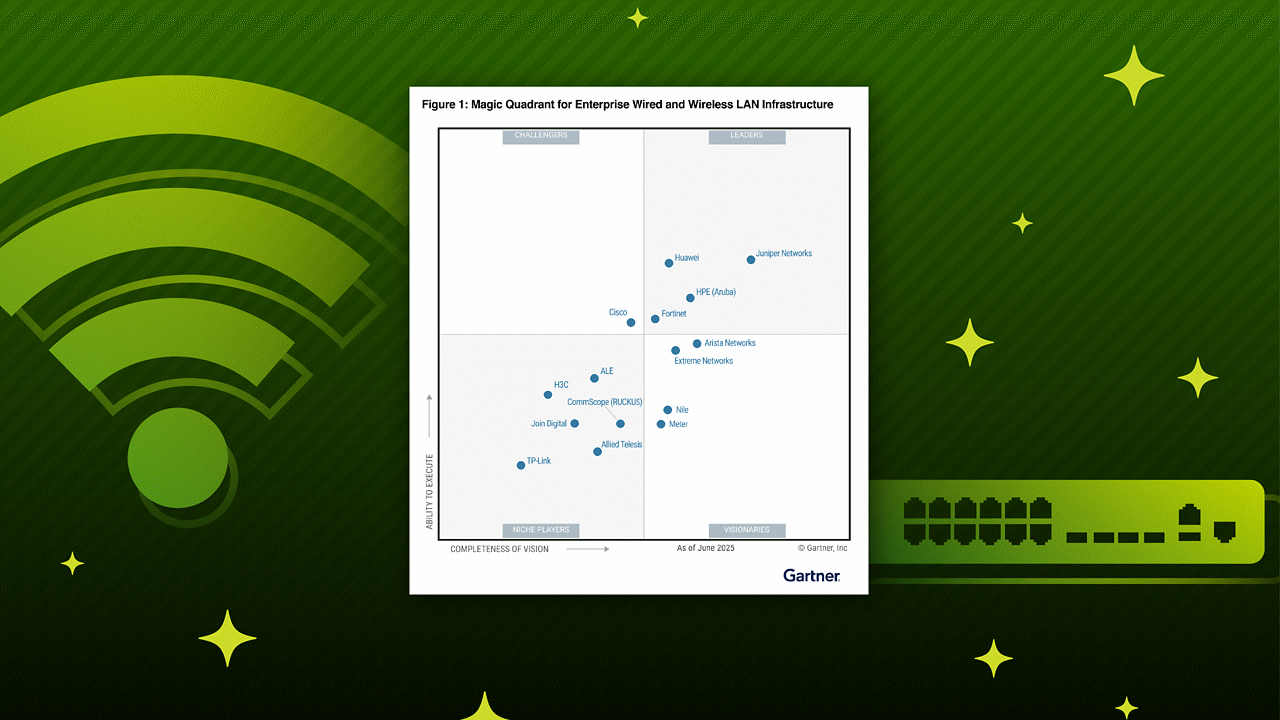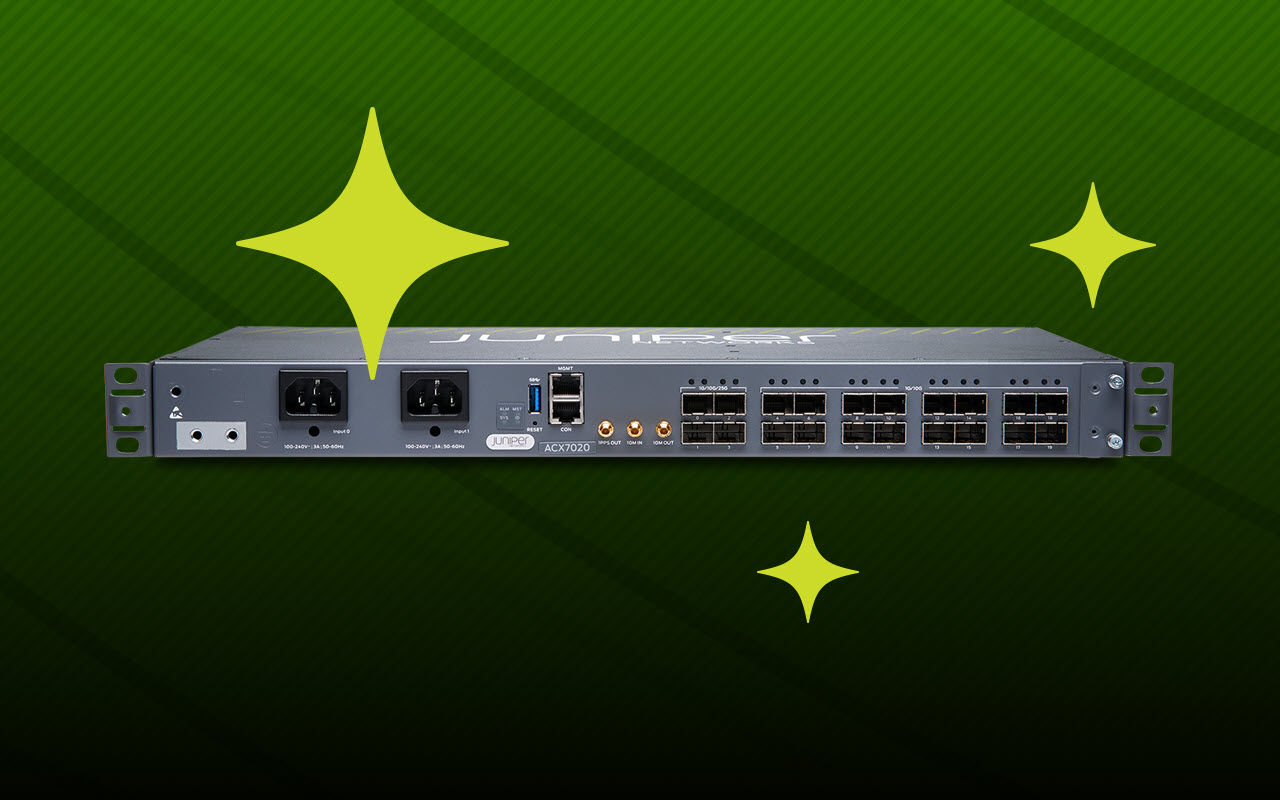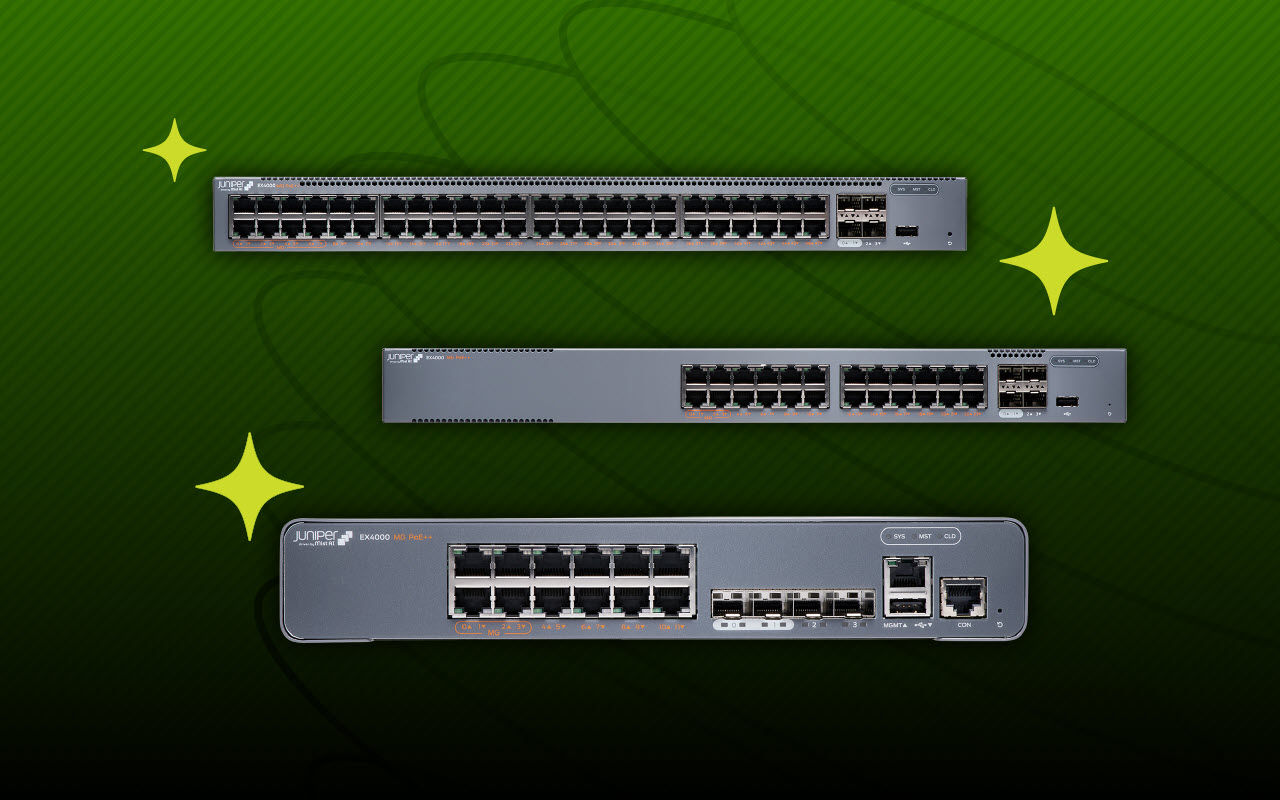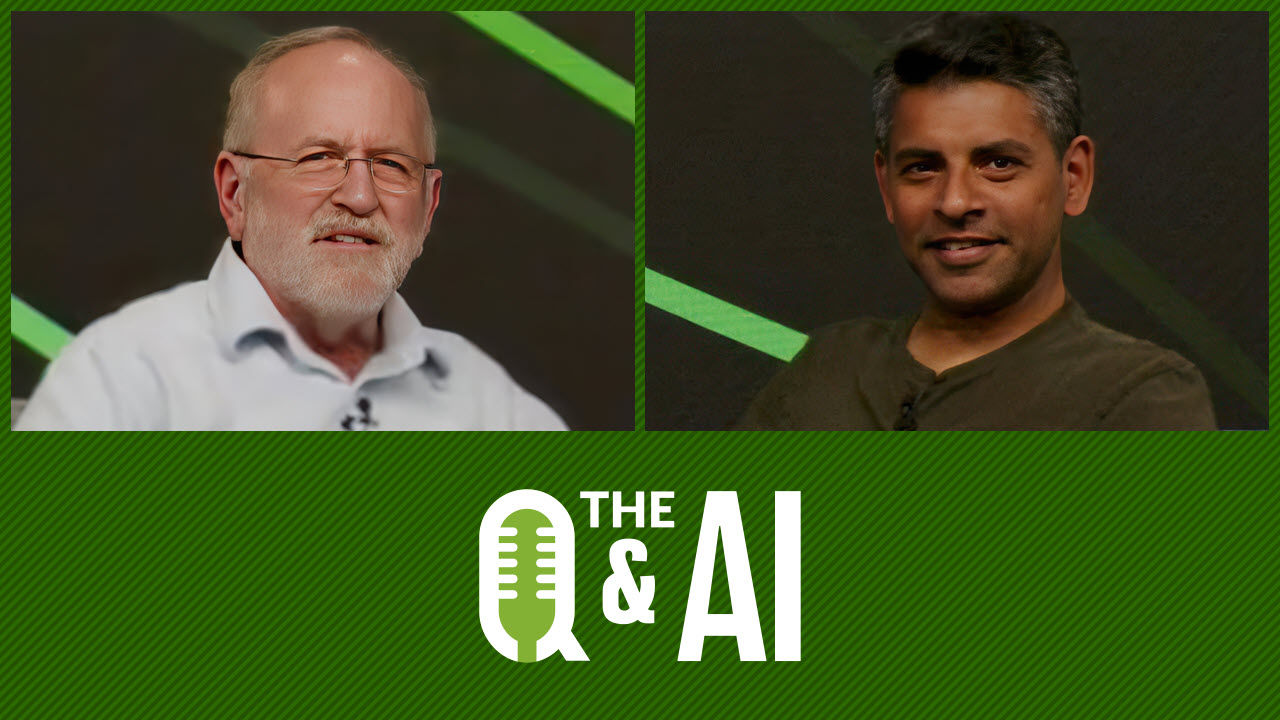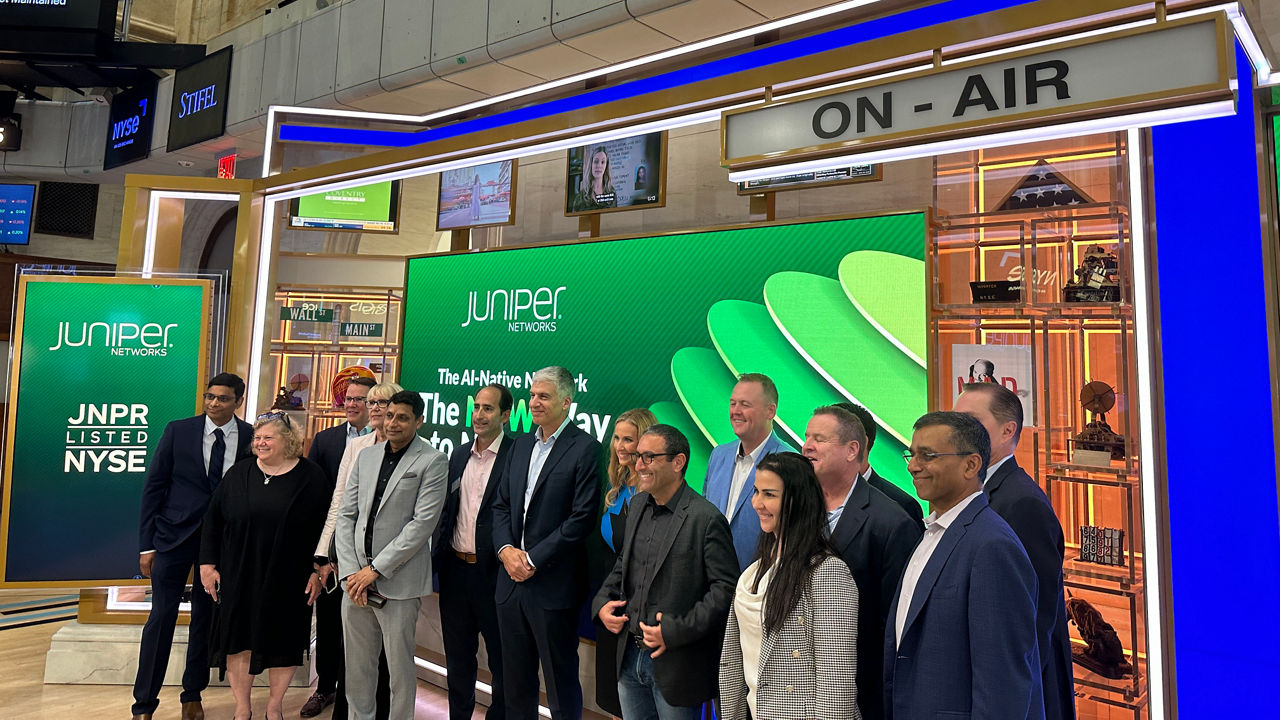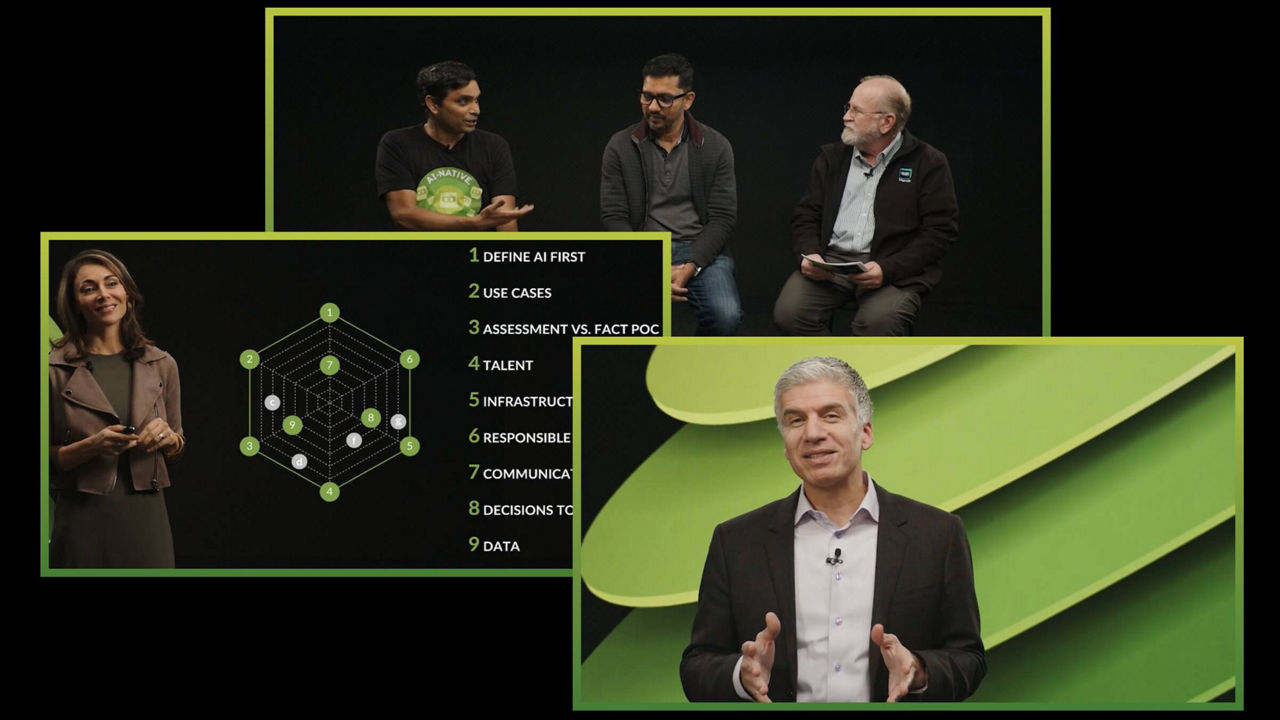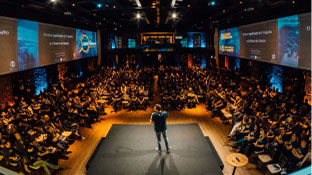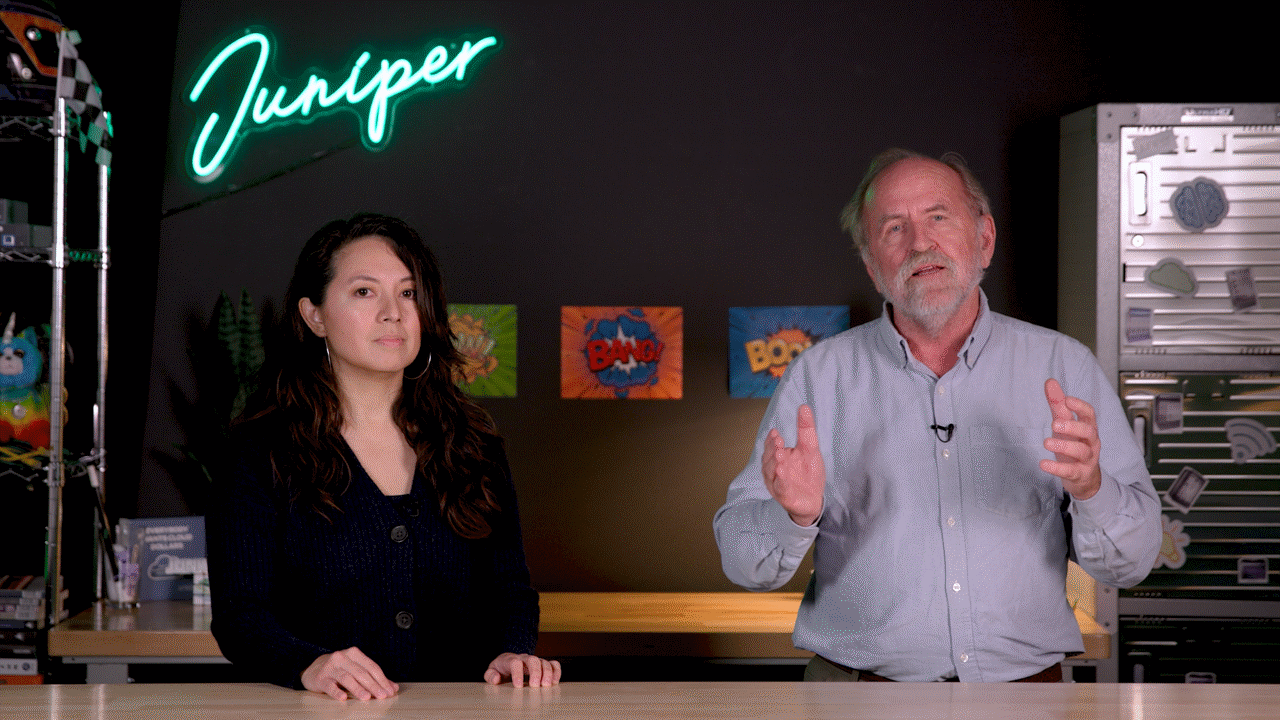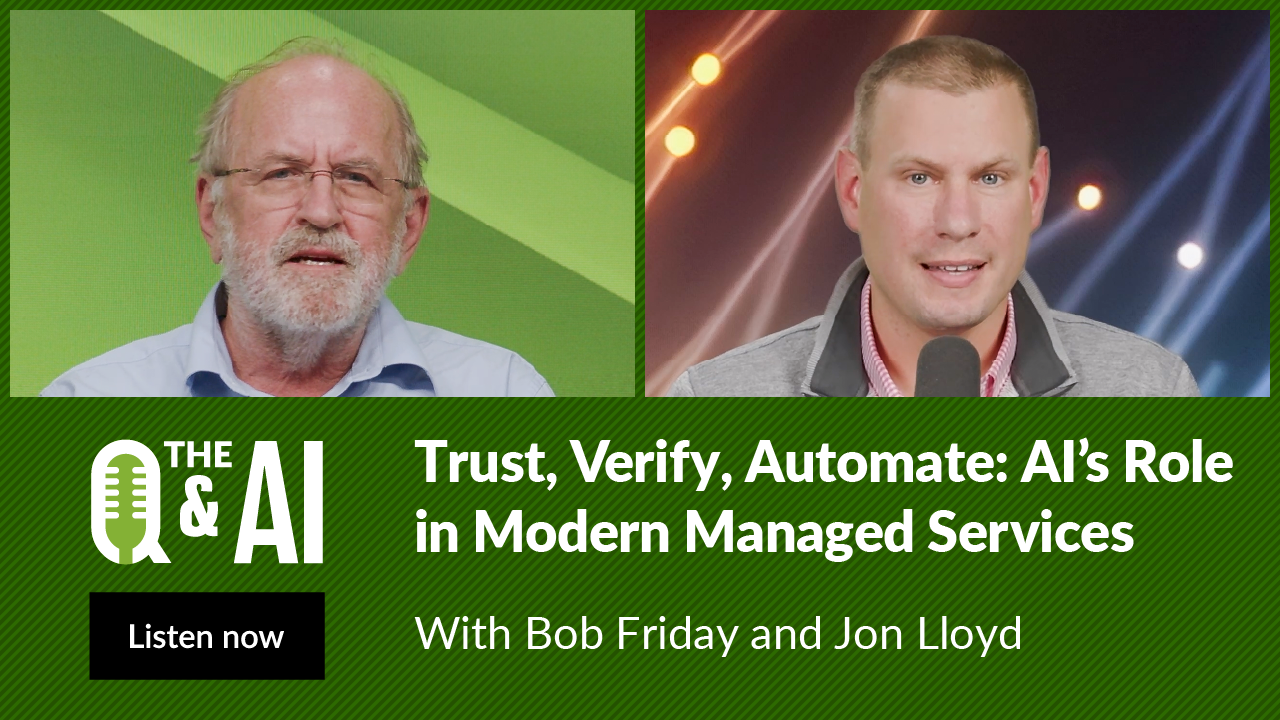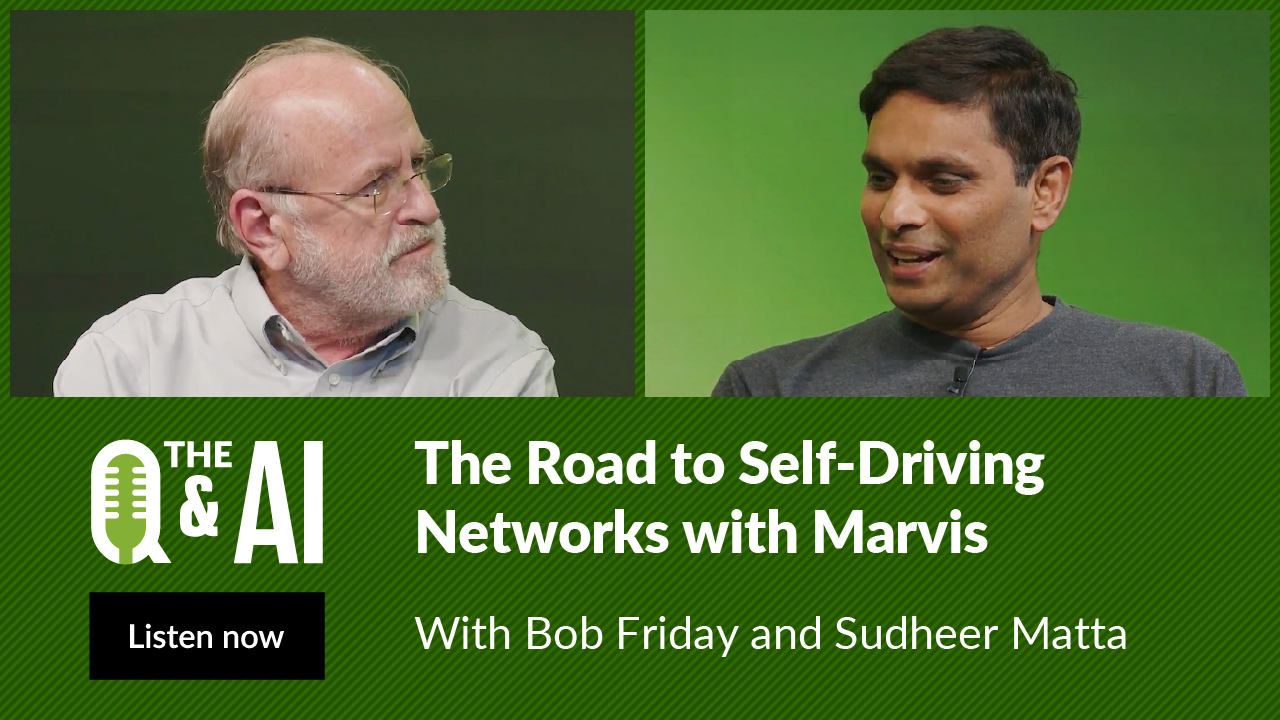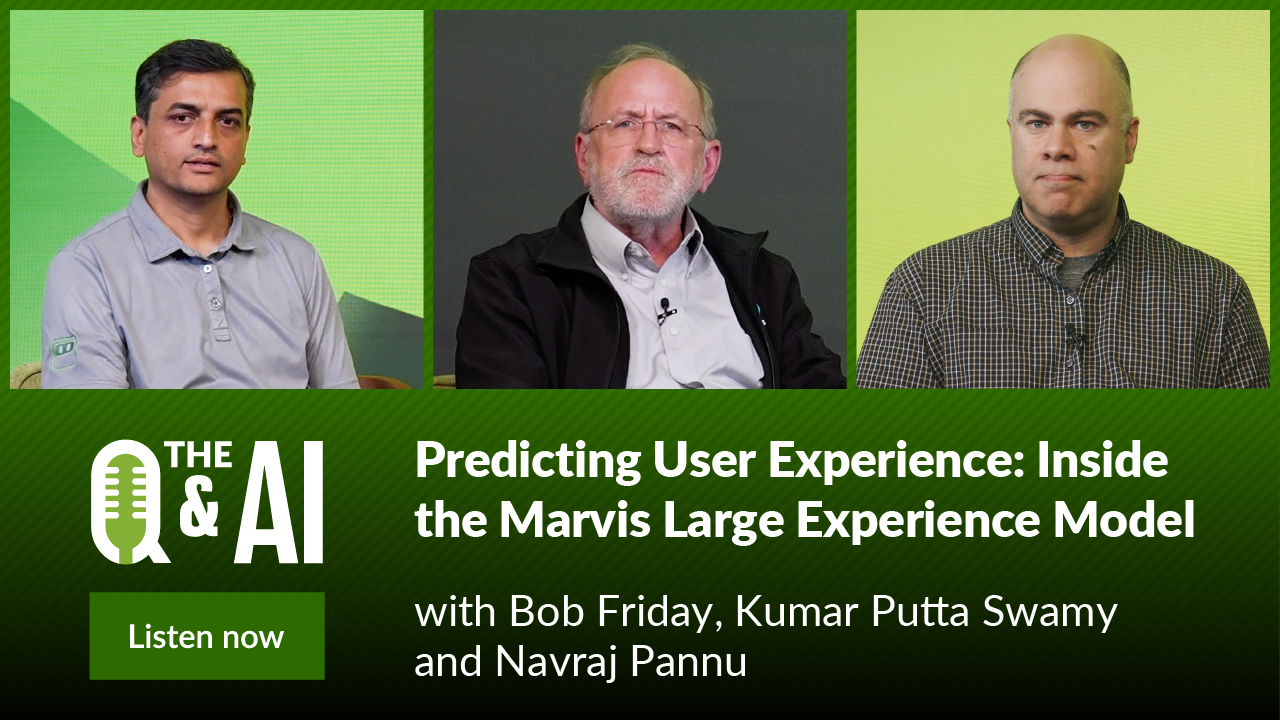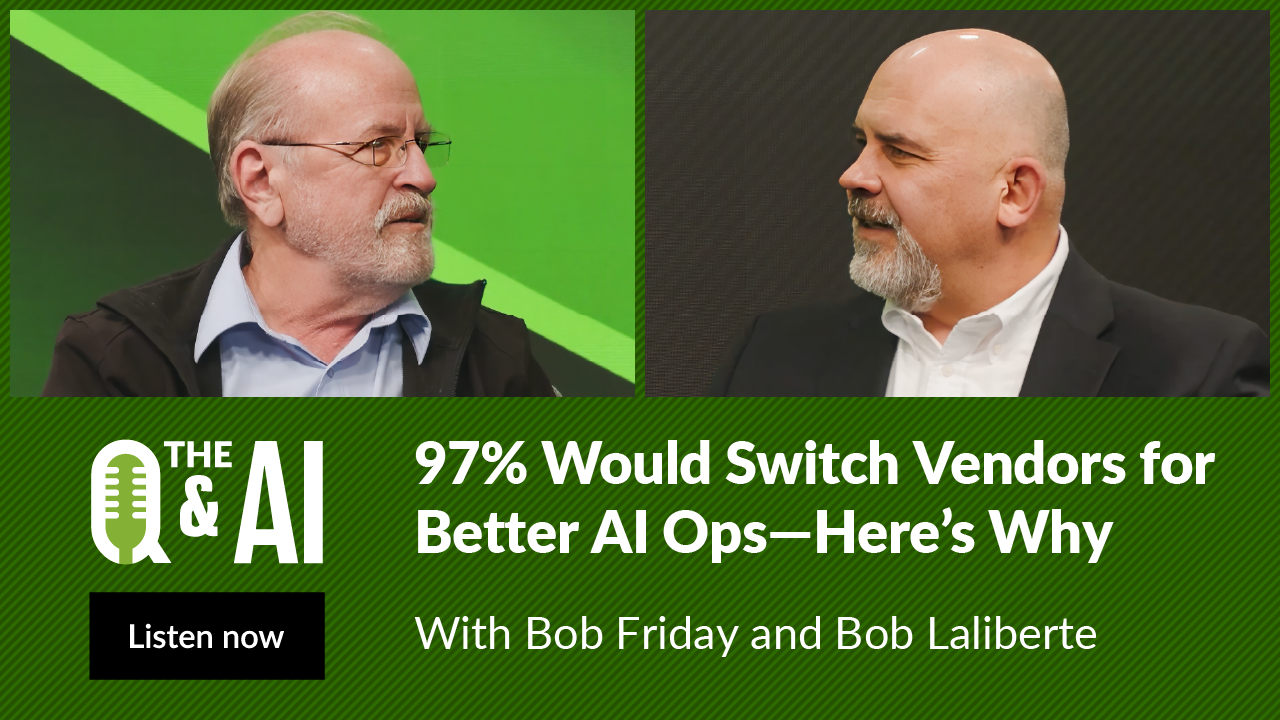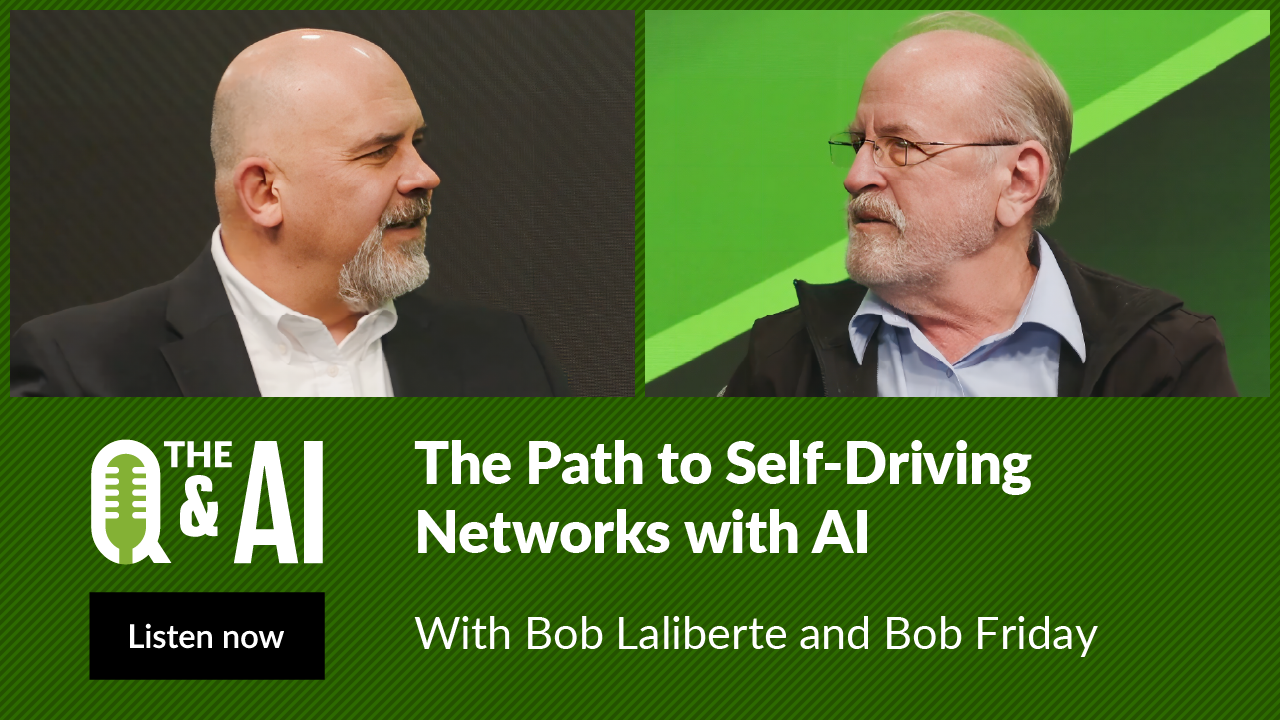The Q&AI: Ghost in the Machine: Marvis Minis

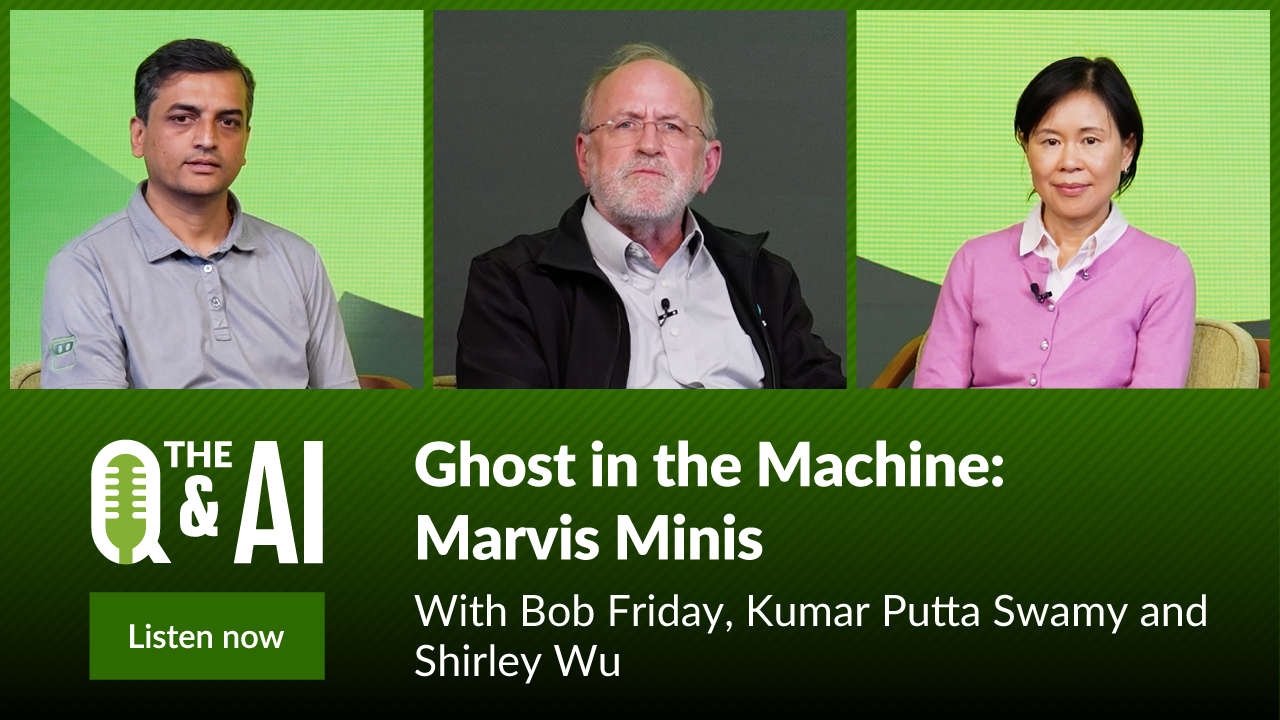
The Q&AI: Ghost in the Machine: Marvis Minis
Digital experience twins have arrived for enterprise networks, and it's changing everything about how IT teams manage infrastructure. Meet Marvis Minis — Juniper Networks' groundbreaking digital twin technology that acts as your virtual user, constantly testing network connectivity and application performance when real users aren't present.
Juniper’s Kumar Putta Swamy and Shirley Wu join us to explore how this game-changing innovation helps network administrators validate
The impact for customers has been substantial. Already deployed across 16,000 sites, Marvis Minis have
What sets this technology apart is its complete client-to-cloud visibility and integration with Juniper's Marvis® AI engine. The system automatically detects configuration changes, builds appropriate test plans, executes validations, and feeds results back to Marvis for correlation and root cause analysis. Even more impressive —
For network teams struggling with changes that break applications in unexpected ways, Marvis Minis offers a proactive solution that identifies problems before users ever experience them. Ready to see how your network performs when nobody's watching? Discover how digital experience twins are transforming network operations and user experience.
You’ll learn
Benefits of Marvis Minis
Technical details of Marvis Minis
Customer use cases
Who is this for?
Host

Guest speakers


Transcript
Bob: Hello and welcome to another episode of Q&AI. Today I'm joined in the studio by Kumar, Marvis Product Manager and Shirley, Marvis Development, and in today's episode, we are going to be talking about Marvis Minis and Juniper's latest innovations around Marvis. Now, in this episode, we are going to be talking about Marvis Minis. So, Kumar, I thought we'd start with you. Marvis Minis, what is it? What problem, what customer problem are we trying to solve here?
Kumar: So, Marvis Minis are embedded functions on Juniper devices that simulate end user transactions and then, by the virtue of that, they try to understand our users. Or will the users be able to connect? And if they connect well, will they be able to pass traffic well, reach? All the applications perform functionalities they were supposed to be performing. Will all those functionalities go good is what Marvis Minis will help with the customers.
Bob: Okay, so Marvis Minis is some sort of synthetic user. Why do I need a Marvis Minis on my network? I've got plenty of users on my network.
Bob: So think of Marvis Minis as basically saving time and money for the customer. Without Marvis Minis, whether it's a day zero cutover or, let's say, day two and beyond any change in the validation prior to Marvis Minis, customers would have feet on ground trying to test everything, like from every corner of the building, every corner of the retail. Are the applications accessible? Will the scan app work properly from those particular aisles of different retailers?
Now, with Marvis Minis post change window Marvis Minis will identify the conflict change and then kick in and perform all those tests and then generates a report saying like hey, here is what is working, here is what is not working. And that way, without any feet on the ground, whether it's enterprise, whether it's hospitality, whether it's retailer, you're now able to kind of get an idea as to like what will happen when that store opens in the morning, or when that, let's say, the clinic opens in the morning, or the K-12 school, when kids return to the class.
Will they be able to perform all those functions they are used to take a test on the school or whatnot, right? So, Minis gives you this unique capability where you don't have to send people into the site to cross validate things. You make a change and then Minis comes back and tells you like your change is good or bad.
Bob: Okay, so. Minis is trying to keep make sure all my critical network services and applications are up and running. Maybe a couple examples what network services is Minis making sure it's up and running here?
Kumar: Yeah. So, I mean there are a lot of examples, right and like. It has been a huge return of investment for all of our customers. Just to kind of fairly, just to give an idea, right, Minis so far has been been running around 16,000 of Juniper sites. And then, just to give a couple of quick examples, there was one change window, like a day two and beyond.
One of our retailers did make a SD-WAN policy change and what they hadn't paid attention is if, for some reason on the retail site, if the traffic falls back to the backup gateway, it was not able to reach that particular application. The change in the policy done was not taking care of that aspect.
But right after that change, Minis, identifying the conflict change, ran the validation and then brought up and, like a Marvis action, saying like hey, this particular application the pharmacist has been using will not be reachable if the store falls back to the backup mode. Imagine if Minis had not found that. This would have been a wild goose chase right when some site which falls back will kind of report that and people would have took days, if not months, to figure out that problem.
Bob: Now, Shirley I saw last year you guys announced full-stack Minis. Maybe you're on the technical side. Give the audience a little bit what's under the hood. If I look under the hood, what exactly am I going to find? Cloud hardware?
Shirley: Yeah, so Minis is a digital train for Marvis. Actually, what does it mean is they include all the innovations in the Juniper MIST, from access point to wired switching to the SD-WAN, so it's end-to-end, from firmware side to the cloud intelligent, to our cloud infrastructure, so end-to-end. And, of course, you know close collaboration with a product management to provide this type of vision.
So, and of course, engineering about execution. So, this is a high level. You know the end-to-end innovation from the whole portfolios, from firmware to the cloud intelligent, one of the key components, and, just like Kumar mentioned about right; in order to execute this type of a large scope of the execution across all the devices, we deployed Minin, we want to make sure we are able to monitor customer networks without interrupting customers' networking infrastructure and their cloud primary functionality to deliver user traffic. So, this is a lot of a cloud intelligent income into the design that makes sure we conduct those type of tests, collecting the data, without interrupt user experience.
Bob: So now Marvis Mini supports access point switches and routers. Now, if I'm a Mist customer, do I need Marvis Mini to run on my AP switch router, or is it just a cloud thing?
Kumar: So, if I can kind of add details to that. So, think of Marvis as like a human which can automate right, and it usually goes after a simple problem. So, what it starts is it starts with Minis on the access points, it keeps validating it and if it finds a problem then it will say like let me see if the same problem exists when you try to reach out from the gateway or from the switch.
So, the way it identifies is it broadens its scope of validation where, if everything is looking good, things are working fine, it keeps kind of validating from the access point. The moment it sees a failure, let's say if it's a full stack, then it expands let me try this from the switch, let me try this from the gateway, and then see, like, if it fails that way, like it knows like hey, everything on the site, just gateway and beyond, is failing, or is it only a distribution switch and beyond failing? Or let's say if it's only a particular switch and a few APs are not able to reach a particular application or so, right? So that way it kind of iterates the validations with a little scope expansion both across full stack as well as across the APs within a given switch as well.
Bob: So, do I need to get a new firmware or is this an extension in my cloud?
Kumar: That's a great question, I think, Shirley. Why don't you?
Shirley: Yeah, so it's an existing extension. As far as you are a Juniper Mist customer, you should get these features for free. Of course, we have a minimum firmware requirements on top of that. Then you don't need to install additional piece of hardware or any equipment on your environments. We fully utilize our default. Mist manage the devices to support this feature.
On top of that, if we are extending the Minis capability and to do the, think about it last year we were just talking about the connectivity monitoring, but this year we are extend the Marvis Minis beyond the connectivity to user experience, like slowest of your network. We extend the feature. We don't require a customer to do any firmware upgrade. We automatically to install those Minis into your device without any downtime and the firmware upgrade.
Bob: Okay, so my AP switch and router are now part of the cloud, so whenever you basically evolve or improve Minis now, I automatically get that during every cloud push.
Kumar: Yeah so one of the cool stuff that we worked on, like latter half of last year to this point, is like downloadable Mini sites, so wherein your firmware, the firmware on the device, remains static, you don't have to upgrade your firmware, any new functions that you want. Let's say, Mr Customer comes and says like hey, I have this unique application which does a telnet traffic.
Now can I simulate this traffic? Of course, right, we will put that as a script downloadable into the access point and then we now start measuring the network performance metrics in terms of packet loss, latency, jitter for that particular application. That way, nationwide, across all these stores retails, whatnot, right? They will be able to keep a pulse as to how the application has been performing across multiple stores.
Bob: Okay, so this is good news. So, as you guys innovate Minis, I don't need to upgrade my firmware. I just inherit this new innovation. So last year it was all about full-stack Minis, making sure Minis is running on your AP switch and router. Kumar, maybe a little bit what is new this year?
Kumar: So this year, last year, as you said, it was all about whether a user is able to connect, whether day zero or day two and beyond any change window, will a user be able to connect and pass traffic? This year we are adding Minis Client to Cloud, which is all about, once users are connected, or the devices are connected, how well will they do in terms of the network performance towards the application itself? Right, is the application slow from, let's say, Cupertino store versus San Jose versus Sunnyvale, or is it like Frequent disconnects happening on a particular store compared to the rest of the, the chain?
Right, so it's all about, like now, how well the, the application is performing from the store, even not being like, not even being having a single feet on the ground. Right, so, which means 24 bar seven throughout. Like it's kind of constantly measuring that with simulating the user traffic towards the application which gives a pulse as and when.
Let's say the application team which has hosted something, as and when. Let's say the application team which has hosted something on an Azure or AWS Cloud, VPC. If they make some change which deteriorates an application performance towards the store or the campus, Minis will come back and say you know what, right about 10 pm in the night. There is now this application which is disconnecting more frequently, which used to not happen earlier.
These are the kind of problems that we are solving now wherein, any time a user experience is about to degrade in terms of like disconnecting applications or slowness of the application, Minis comes back and creates a Marvis action saying like hey, this particular site, this segment of the network, when users will come in in the morning or when users are present on the network, will have a degraded performance in terms of the application usage itself.
Bob: Okay, so now it sounds like so Mini has a complete path from client to cloud, a whole trace route of what's going on with that thing. Now, Shirley I heard the other magic going on is really around the correlation of what we do with that data now. So Shirley a little bit about Minis SLE. I hear that's the next big thing coming out this year.
Shirley: Yes. So, Minis collected so many of our data so we are feeding Minis data as real customer data. We utilize the current existing Marvis AI engine to fit in the Marvis AI engine to generate the SOE evaluation, to have a classifier to produce the results that the customer where, that when there's no user real user on your network during those midnight, for everybody went to home. What is your network classifier will be for the time to connect successful connect.
Bob: So, this is a true digital twin. This is like the existing Mist user SLEs giving you a full reason on bad user minutes. These are like bad Marvis Mini minutes, now that we're going to basically be able to explain why Marvis Minis is actually having a problem.
Shirley: Exactly.
Kumar: So, Minis are more like now. Marvis has multiple things at its disposal. Think of Minis as an additional data source that Marvis can press into action, whether it's validating is there an issue? Do I need to boost up the confidence if it's a real issue versus like one's one false positive, or let's say it's cross validating that as the issue being resolved after, after the change that the user has done right. So that way, Marvis now uses Minis as a data source that it can bring into action whenever required to cross-validate functions.
Bob: Now I've heard severe comment that customers are now looking at Marvis Minis as a source of truth. Kumar. Maybe a couple of examples. How are customers actually using Marvis Minis?
Kumar: So mainly around, customers are eager to understand that, hey, whenever they do any changes whether, let's say, as I mentioned earlier, it's a day zero cutover they are using a different vendor, they cut over the network to our gear and they want to understand that all the functions, all the things that were working earlier are continuing to work. So that's one aspect where, as soon as they cut over to our gear, within an hour, once the network is fully deployed, Marvis Minis starts kicking in, starts sending the results back as to like, hey, this particular wireless LAN or, let's say, this particular port where the IoT device or whatever is connected, is able to get IP address resolved and get to the internet.
That is one aspect. And then the second aspect is there are some critical components, applications, let's say in the previous example, as I mentioned, pharmacists being able to use an application of their own are those kind of applications which are very critical to the store, working day in, day out. So, these are the main aspects people use for Marvis management.
Shirley: And another important use case is that, when customers typically make their network configuration change in the middle of the night, when there's no user on the network, Minis be able to automatically identify those critical config changes. Build a test plan, identify which AP, which switch, we're supposed to do the test, what the scope of the test. Build the plan, execute the plan, collect the results and feed the results to Marvis AI Engine and we'll send the customer alerts if we identify the issues.
Bob: So, Marvis Mini is intelligent in making sure it checks all the VLANs and all the different paths back to the cloud and everything. Now, Shirley, you've been with MIST since the beginning, I think you did most of the Marvis SLE, all that user service level experience things we've worked on for pre-connection and post-connection. Is there any real difference between a user service level experience and a Mini service level experience?
Shirley: Yeah, so for actual, real user, since it's a mobile client, they come and go and specifically for retail stores, a lot of users, they generate quite a lot of noises. How we can, from those noises, identify true problems from the customer's network, that's really the challenge. But for Minis it's the control. The cloud control manage that generates the data, which is much more trustworthy than the actual Wi-Fi client that generates the data. So typically, Marvis utilizes our managed device to send the stats and the events to the cloud to detect the problems.
Which is actual user already encountered a problem. They are paying the price, they are suffered. So now we use Minis data. We wanted to be able to capture the problems way ahead of actual users suffering from those network issues. So that's a key point is that we want to help customer identify the problems before the user encounter the same problem.
Bob: So, Minis is actually truly a synthetic user in place of our user. It's simulating an actual user on the network. Now, Kumar kind of wrapping up, it sounds like the big innovation here is we've got Marvis Minis. We have client-to-cloud complete visibility from client to the application in the cloud, and it sounds like we now have a Minis SLE to go with it. What's got you excited in terms of looking forward on customers? How do you see Marvis Mini's 2.0 now changing what customers are doing out in the real world.
Kumar: So definitely there are two parts to that right. So, one is Mini's client to cloud will now be able to do post-connect, which is application network performance. That's one. And second, which I think you mentioned a while ago, was correlation. Right, there is nobody, no other vendor, who can correlate well that, hey this particular problem, when, where, what happened? Marvis 2.0 or Marvis Mini 2.0 is able to put a pin to that, saying like, hey, this is what exactly went wrong, right? So super excited with this launch of Marvis Mini 2.0.
Bob: Okay, now Marvis Mini is one of your new Marvis babies. So, looking forward Marvis Minis, where are we heading?
Shirley: It’s live very exciting like I said, Marvis Minis is a close collaboration with Mist Engineer, from product management to firmware engineer, to cloud infrastructure and, of course, data science team. And it's quite a lot of effort we put this together and because existing infrastructure continue extending the Marvis Minis features, we're going to have minimal impact of the customer. So, we are looking forward to being a lot more features into Marvis Minis, not just as a troubleshooting tool and to be able to identify the problem. Extending that to help Marvis identify problems way ahead of real customer encounters.
Bob: Yeah, well, you know. I always say you know, great AI starts with great data. For me, it looks like Marvis Mini is bringing a ton of gold to Marvis so Kumar. I want to thank you, Shirley. I want to thank you for joining today. I want to thank the audience for joining today and look forward to seeing you on the next episode of Q&AI.




